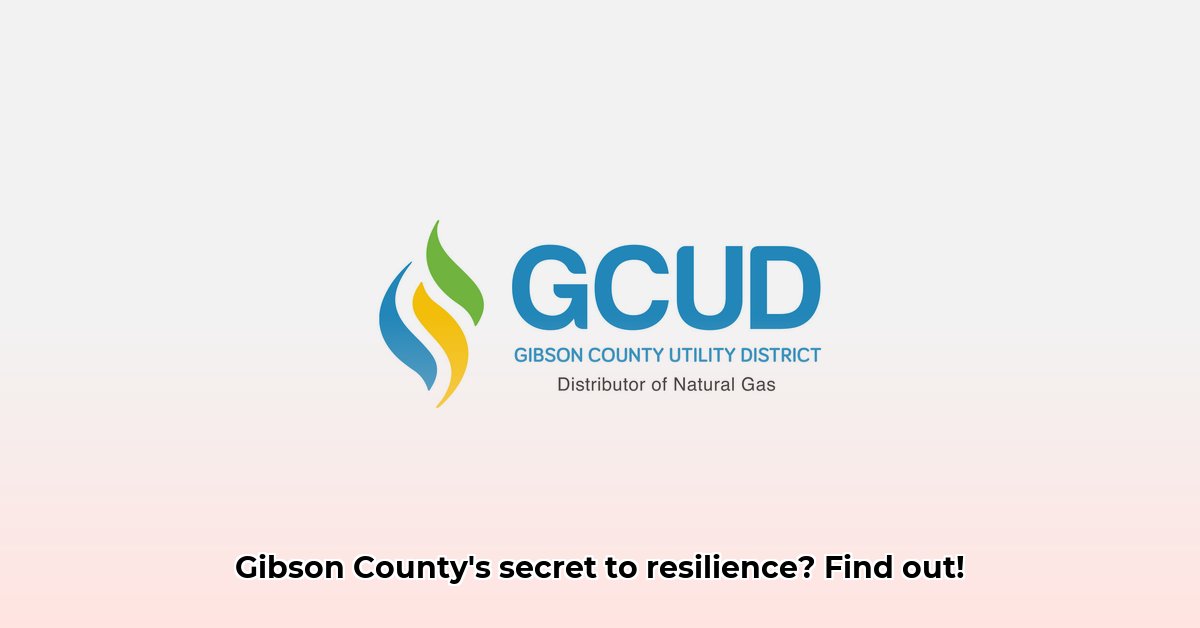
Imagine Trenton, Tennessee, after a severe storm: power lines down, water scarce, and residents facing the daily challenges of disrupted essential services. This scenario highlights the critical role of the Gibson County Utility District (GCUD) and the urgent need for a comprehensive plan to ensure resilience against increasingly frequent and intense weather events. This isn't simply about pipes and wires; it's about the well-being and economic vitality of the entire community. This article examines the challenges facing the GCUD, explores innovative solutions, and outlines actionable steps for stakeholders to build a more reliable and sustainable future.
Weathering the Storm: Building a More Resilient Infrastructure
Severe weather events—tornadoes, floods, ice storms—regularly stress Gibson County's infrastructure. Power outages, water disruptions, and communication failures are commonplace, demanding not only rapid restoration but also proactive measures to prevent future disruptions. A thorough vulnerability assessment, pinpointing weaknesses in the aging electrical grid, outdated water pipes, and insufficient backup power systems, is paramount. This assessment should inform prioritized upgrades and targeted improvements, maximizing impact and minimizing service interruptions. Consider the substantial cost savings and improved service reliability offered by a proactive approach. How much does each power outage cost the community in lost productivity and potential damage?
The immediate goals include enhancing emergency communication. Clear and consistent information for residents is crucial, guiding them through disruptions and directing them to needed assistance. Long-term improvements necessitate investment in robust infrastructure, potentially including "smart grids" (digital grids that use sensors and data analytics to predict and address problems before they cause widespread outages). This proactive strategy drastically reduces costs and ensures service reliability.
Residents also have a vital role. Participation in community preparedness programs—first aid training, emergency supply kit preparation, and understanding evacuation routes—enhances community resilience. Local government support, through effective resource allocation and backing for GCUD initiatives, is equally crucial in building a more robust community.
Modernizing for a Brighter Future: Embracing Sustainability and Innovation
The GCUD's infrastructure should be viewed as dynamic, requiring constant adaptation and evolution. A strategic modernization plan, embracing sustainable practices and technological innovation, is essential for efficient and reliable service. The transition to cleaner energy sources, such as solar or wind power, reduces the district's carbon footprint and positions Gibson County as a leader in environmental stewardship. What percentage of the GCUD's current energy consumption could be met by renewable sources?
Technology offers transformative potential. Smart infrastructure, integrating sensors and AI-powered predictive maintenance, enables proactive problem-solving, preventing costly repairs. This approach not only enhances efficiency but also promotes sustainability. The implementation of smart grid technology has been shown to reduce outages by up to 92% in similar communities.
How can we achieve these modernization goals?
- Local Government: Actively pursue grants and funding targeted at infrastructure improvements and sustainable energy transitions. Develop a comprehensive sustainability plan.
- Utility Companies: Partner with the GCUD on pilot programs testing smart grid technology and renewable energy sources. This collaborative approach facilitates efficient resource allocation.
- Community: Engage in open discussions around sustainability and infrastructure upgrades. Support initiatives aligning with these goals.
Connecting the Community: Building Bridges Through Digital Engagement
Transparency and communication are cornerstones of trust between the GCUD and its community. A user-friendly online portal, providing real-time service updates, issue reporting, and community forums, empowers residents and enhances engagement. This reciprocal communication strengthens community ties and improves service responsiveness.
Strategies for achieving enhanced digital engagement:
- Local Government: Invest in a well-designed, accessible online platform. Implement a comprehensive digital strategy for the platform's long-term success.
- Utility Companies: Create digital customer service channels for rapid response to issues and efficient service requests. Utilize data analytics to optimize service delivery.
- Community: Actively participate in digital literacy programs to facilitate access to and utilization of the online platform. Contribute to its design and development.
A Collaborative Path Forward: Actionable Steps for a Resilient Future
The success of this plan hinges on collaboration between the GCUD, local government, and residents. Each stakeholder must leverage their unique contributions to achieve a shared goal.
| Stakeholder | Short-Term Actions | Long-Term Actions |
|---|---|---|
| Gibson County Utility District | Upgrade emergency communication; implement small-scale smart grid pilot projects. | Develop comprehensive modernization plan; transition to renewable energy; implement advanced data analytics. |
| Local Government | Conduct vulnerability assessments; actively seek grants and funding. | Develop sustainability and digital engagement strategies; support workforce development initiatives. |
| Residents | Participate in preparedness programs; utilize online platforms for communication and feedback. | Advocate for infrastructure improvements; support and participate in community sustainability initiatives. |
Building a resilient Gibson County requires proactive planning, technological innovation, and community engagement. By combining efforts, we can secure a brighter and more secure future, moving beyond merely surviving storms to thriving in spite of them. The ongoing exploration of innovative infrastructure solutions and sustainable practices points towards even more significant advancements in the future.